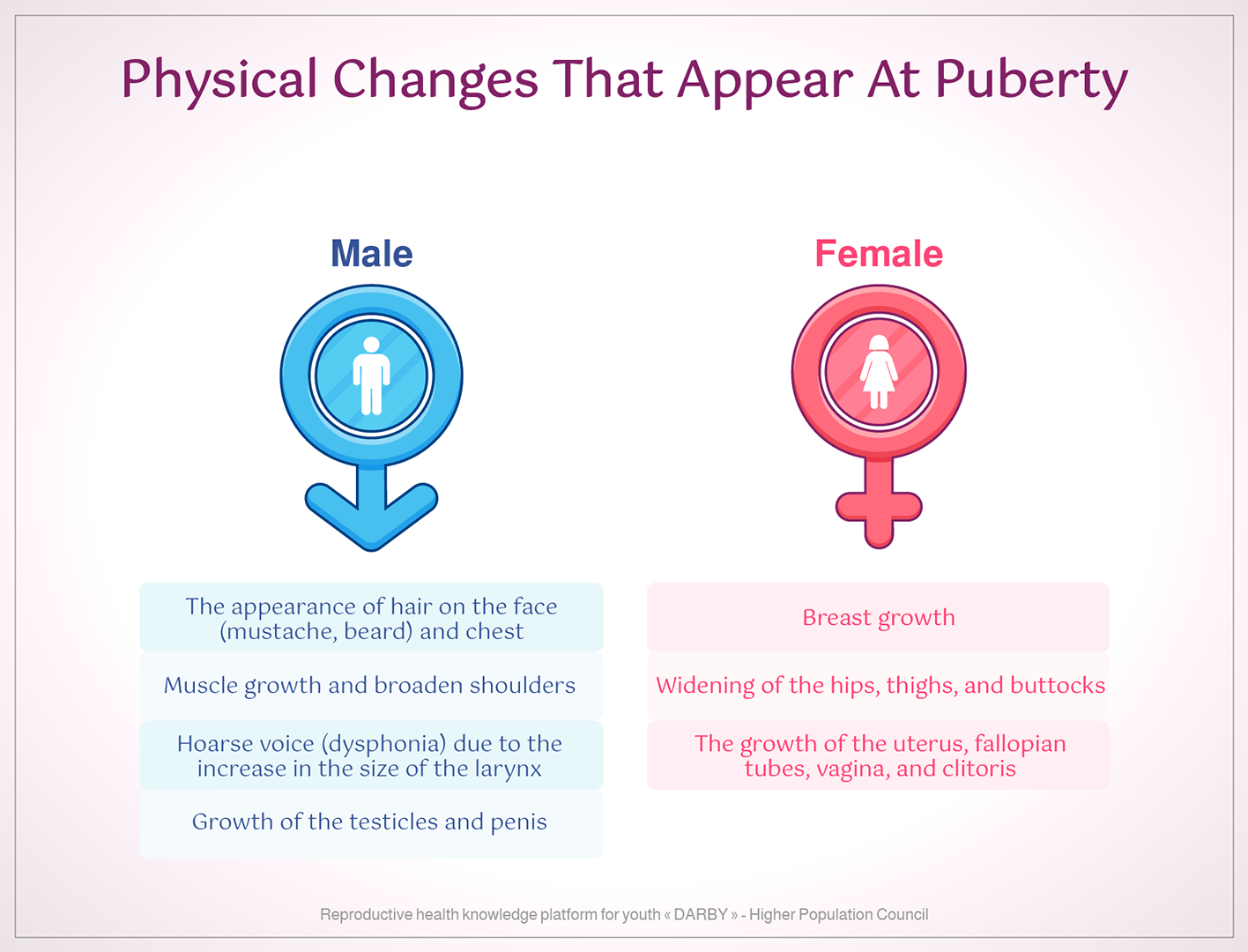Puberty
This topic is very important because it helps females and males in the age of youth and adolescence to identify, either directly or through their parents or through health and social workers, the physical and psychological developments that they will witness and deal with them consciously and rationally.
It is obvious that young people and adolescents know the following:
The stage of puberty begins at the age of ten and ends at the age of sixteen for females and seventeen for males. Parents and young people need to realize that this stage takes a significant amount of time, ranging between two and four years, during which changes occur for each person according to his body.
The apparent physical changes that occur is a hormonal shift within the body represented by the secretion of hormones from the pituitary gland at the base of the brain. These hormones send a signal to the testicles in males to increase the secretion of testosterone and to the ovaries in females to increase the secretion of estrogen and progesterone successively and regularly.
Male physical changes that appear at puberty:
The appearance of hair on the face (mustache, beard) and chest.
Muscle growth and broad shoulders.
Hoarse voice (dysphonia) due to the increase in the size of the larynx.
Growth of the testicles and penis.
Female physical changes:
Chest growth (Sororiation).
Widening of the hips, thighs, and buttocks because of the increase in the percentage of fat in the body of an adult girl. We try here to ask the girls to maintain a healthy diet and to exercise regularly without fear of gaining weight.
The growth of the uterus, fallopian tubes, vagina, and clitoris.

Menstruation
The menstrual cycle is the most significant physical change in females during puberty. It is the process of passing monthly blood (menstruation) through the opening of the cervix and the vagina to the outside of the body, and the duration of this process ranges from 2 or 7 days for most females.
How menstruation occurs:
Every month, the uterus changes because of the hormones secreted by the female's ovaries. The endometrial membrane thickens and fills with blood vessels and tissues to receive a fertilized egg. If the egg is not fertilized, this lining sheds, and menstruation occurs.
.png)
.png)
These symptoms are normal and caused by changes in hormones and gradually disappear with the onset of menstruation. It is necessary to focus on some key points:
The menstrual cycle may not be regular during the first two years of puberty because this may take time, and this is normal.
This age group of young women should learn the basics of personal hygiene in general, especially during the period of the menstrual cycle, by washing the genitals with water and unscented soap more than once during the day during the menstrual cycle and changing the menstrual pads constantly to protect against infections and diseases.
Dispose of menstrual pads in proper ways, by folding them well and wrapping them in tissue paper, and then placing them in the trash can in the bathroom. The number of times a girl must change the sanitary pad depends on the strength of her blood flow, taking care not to leave the same pad for a long time, which leads to an unpleasant smell and infections.
Wash hands before and after using the menstrual pad to avoid infections.
Maintaining a healthy diet that provides them with activity and vitality and doing physical exercises to help relieve stress and improve blood circulation in the body.
Many girls think that bathing during menstruation is unhealthy or harmful, but bathing is necessary and beneficial and does not cause any problems during the menstrual cycle.
In this context, it is necessary to give proper advice about skincare by washing the face and using a special cleanser for it, and about general personal hygiene to avoid the smell caused by sweating and taking care of the hair because it may become oily and needs to be cleaned regularly.
.png)
The changes taking place in the sex hormones in young people lead to discomfort or tension sometimes caused by very simple things. These changes also cause cases of psychological changes in addition to confusion of thoughts and moods.